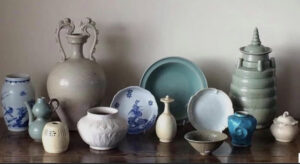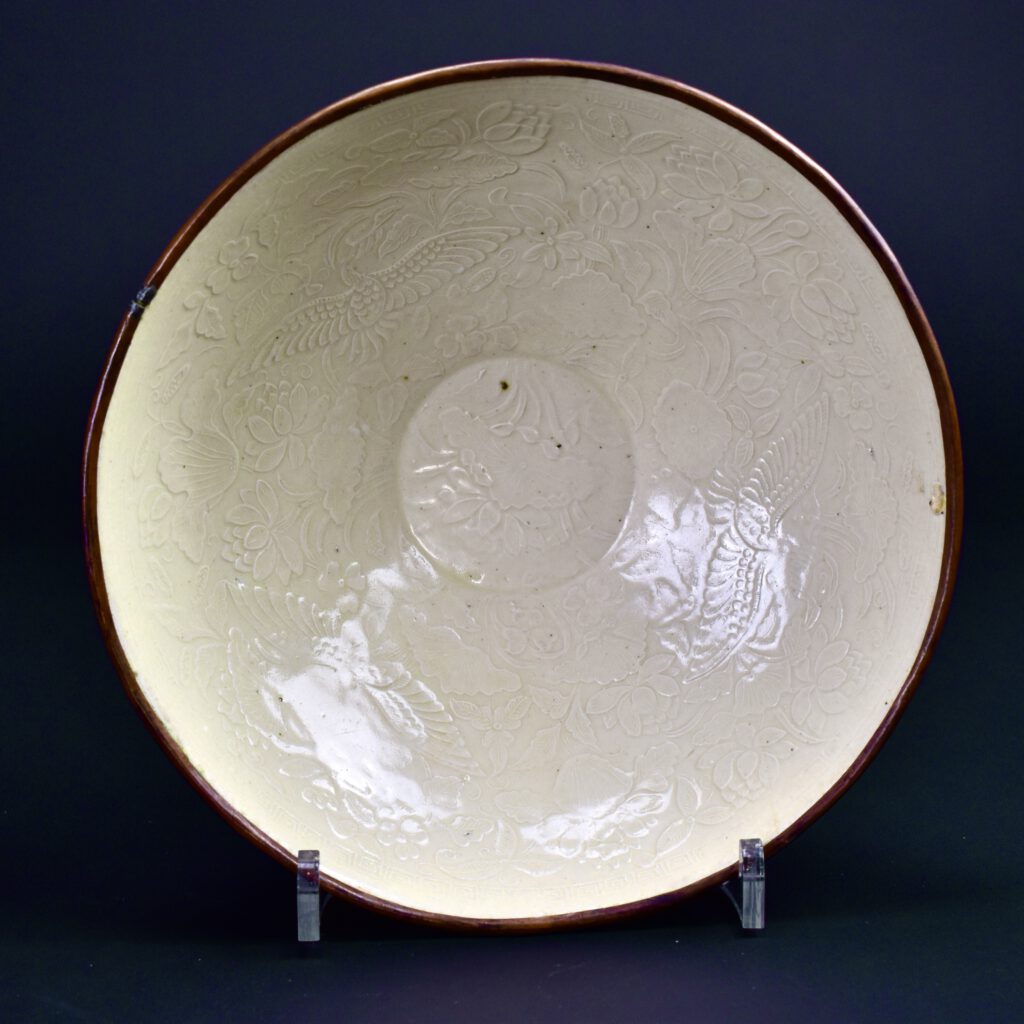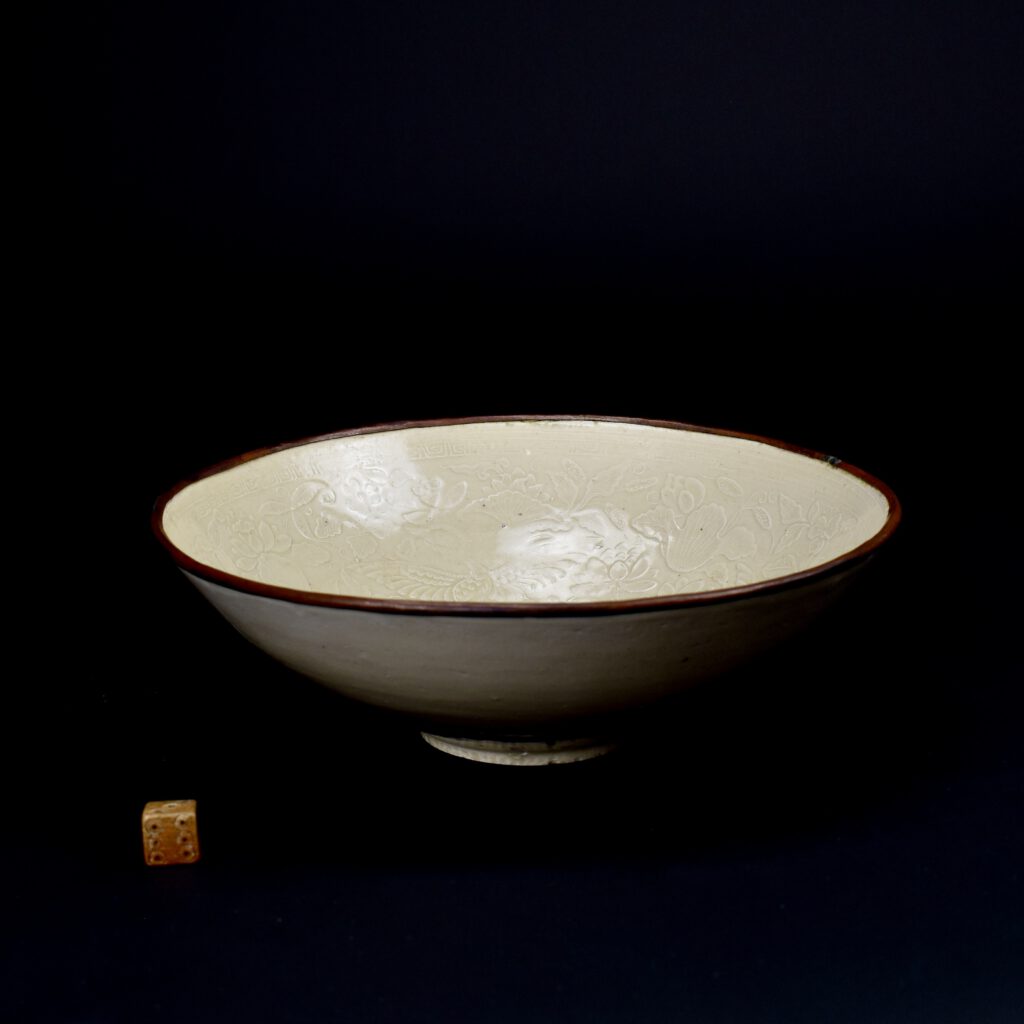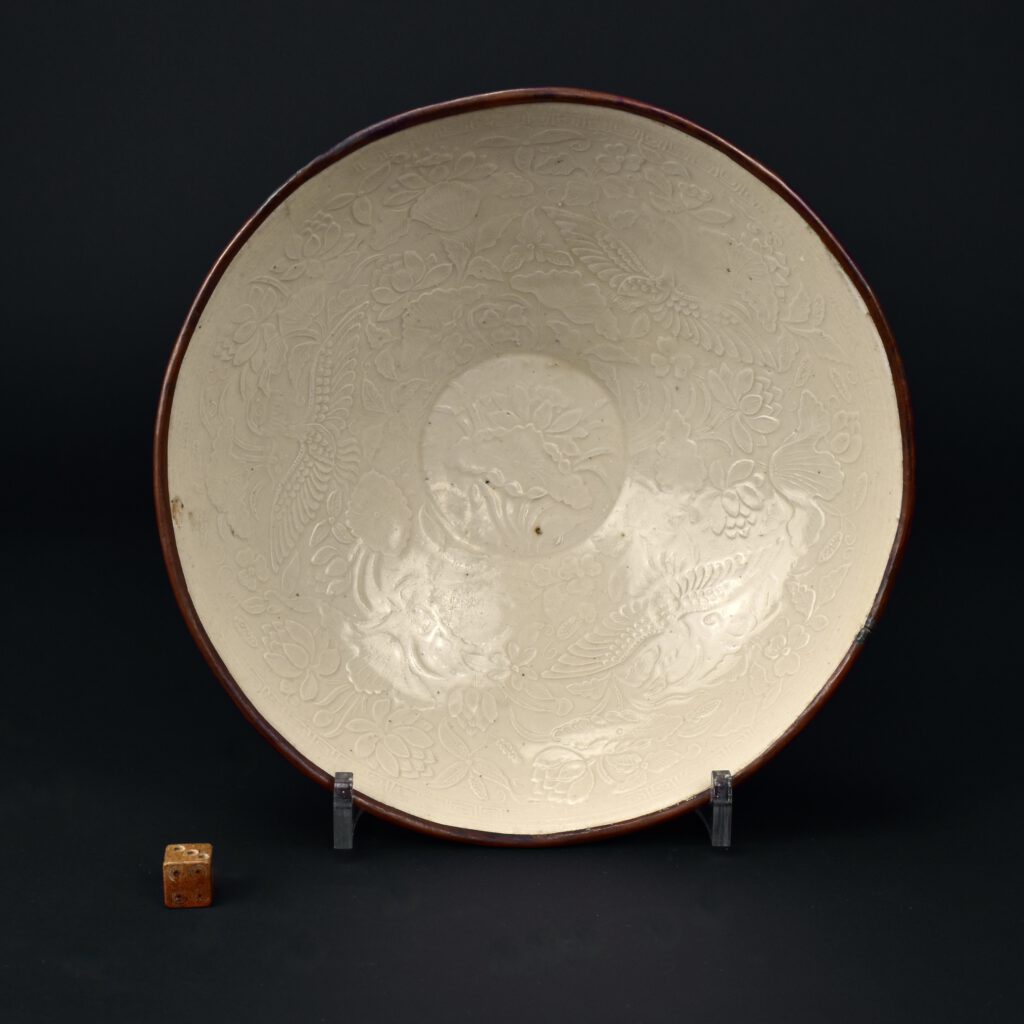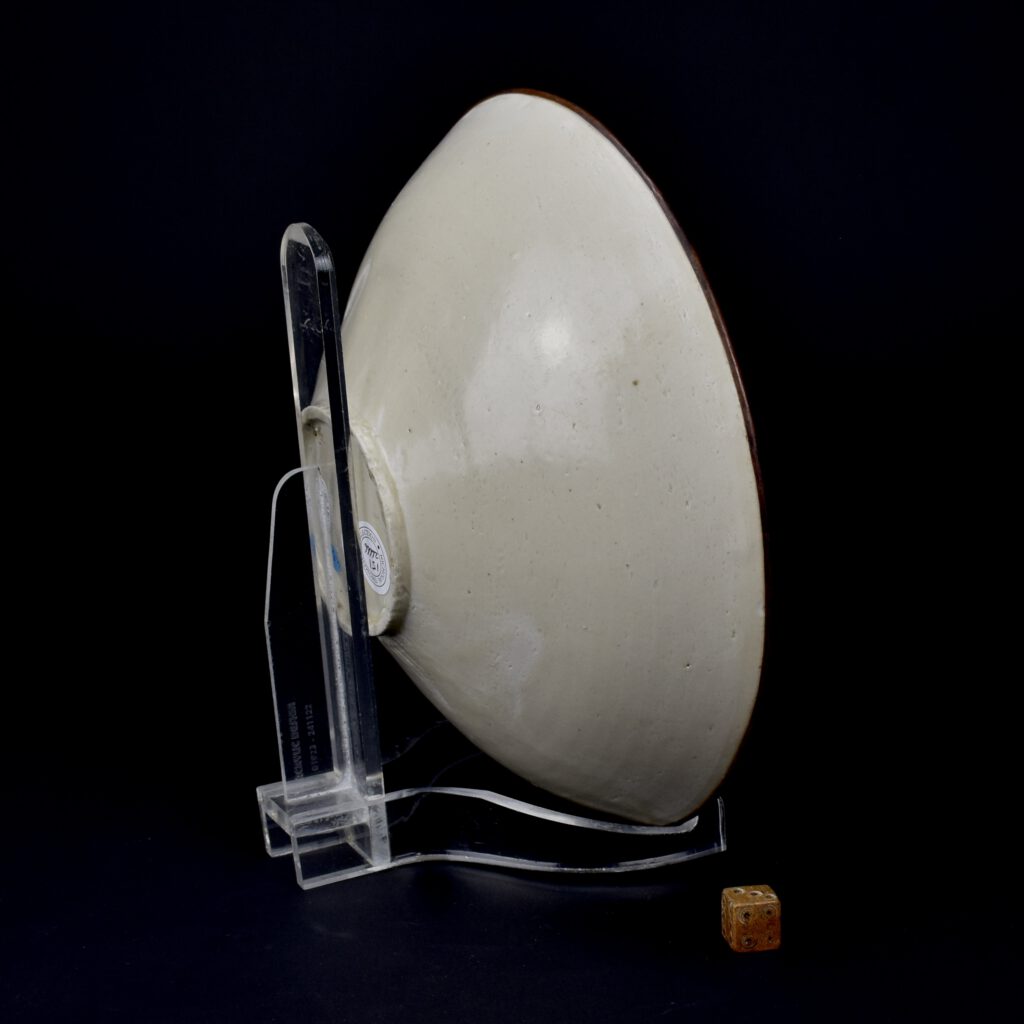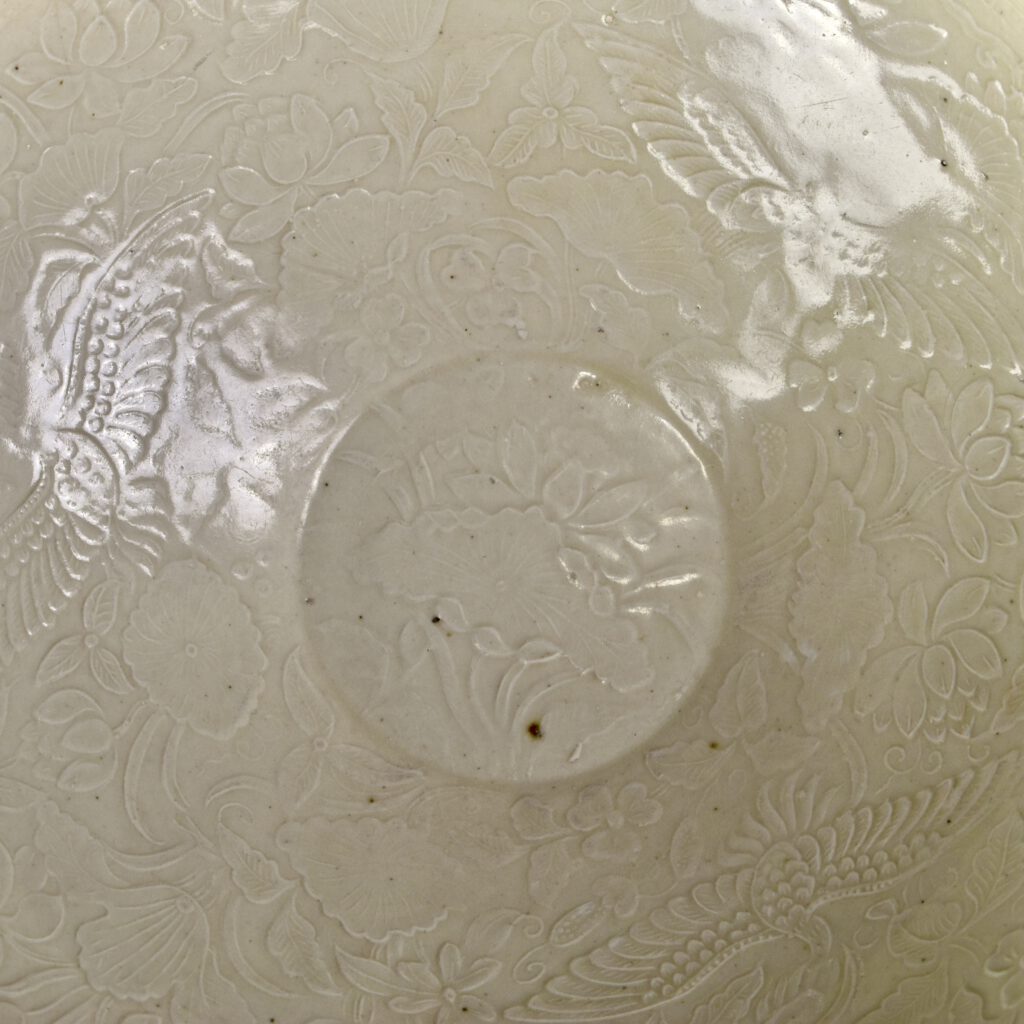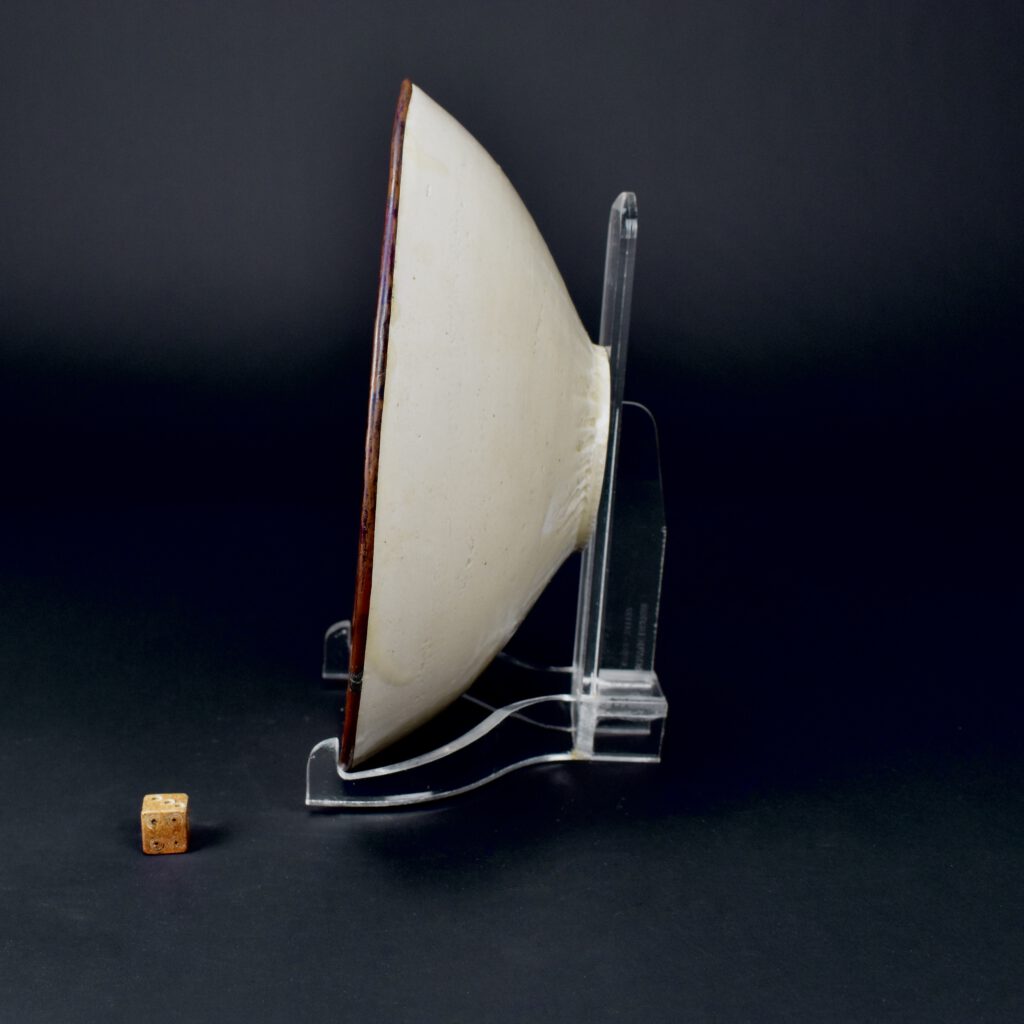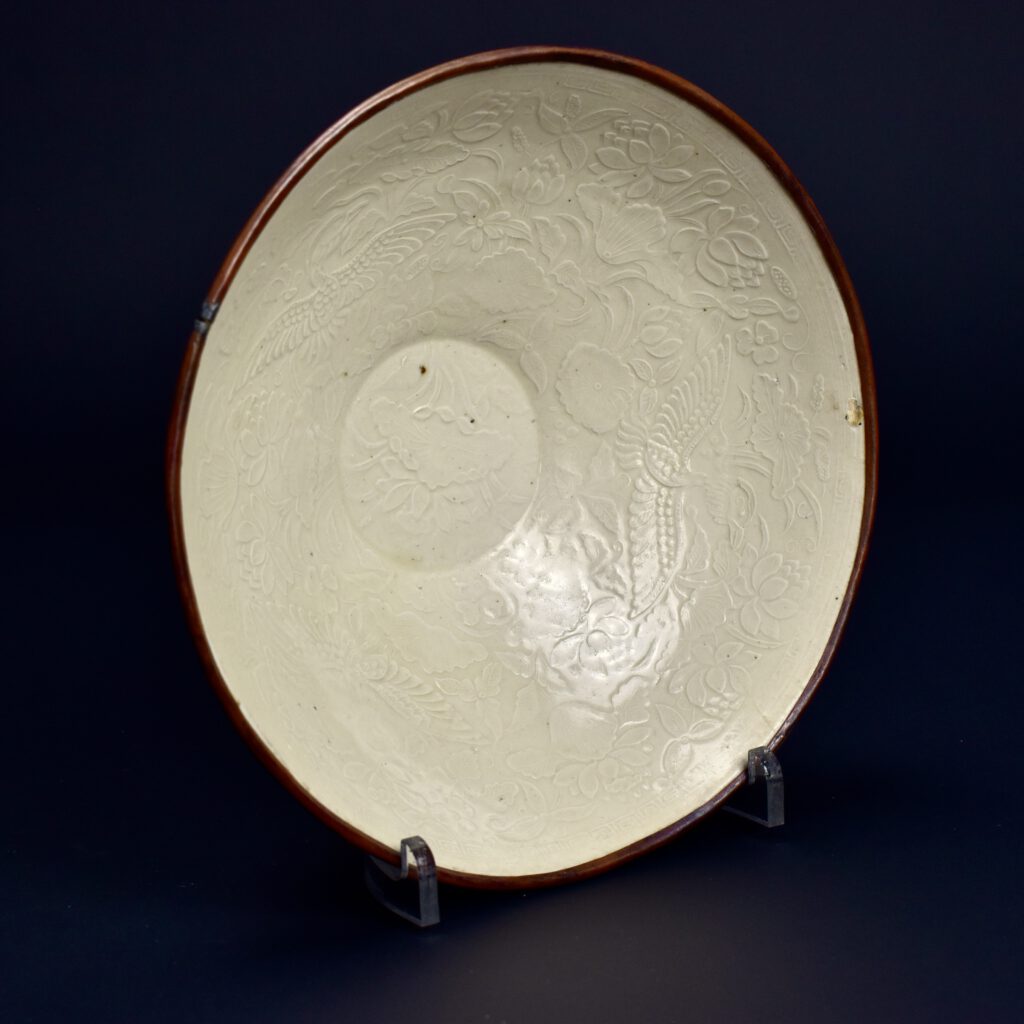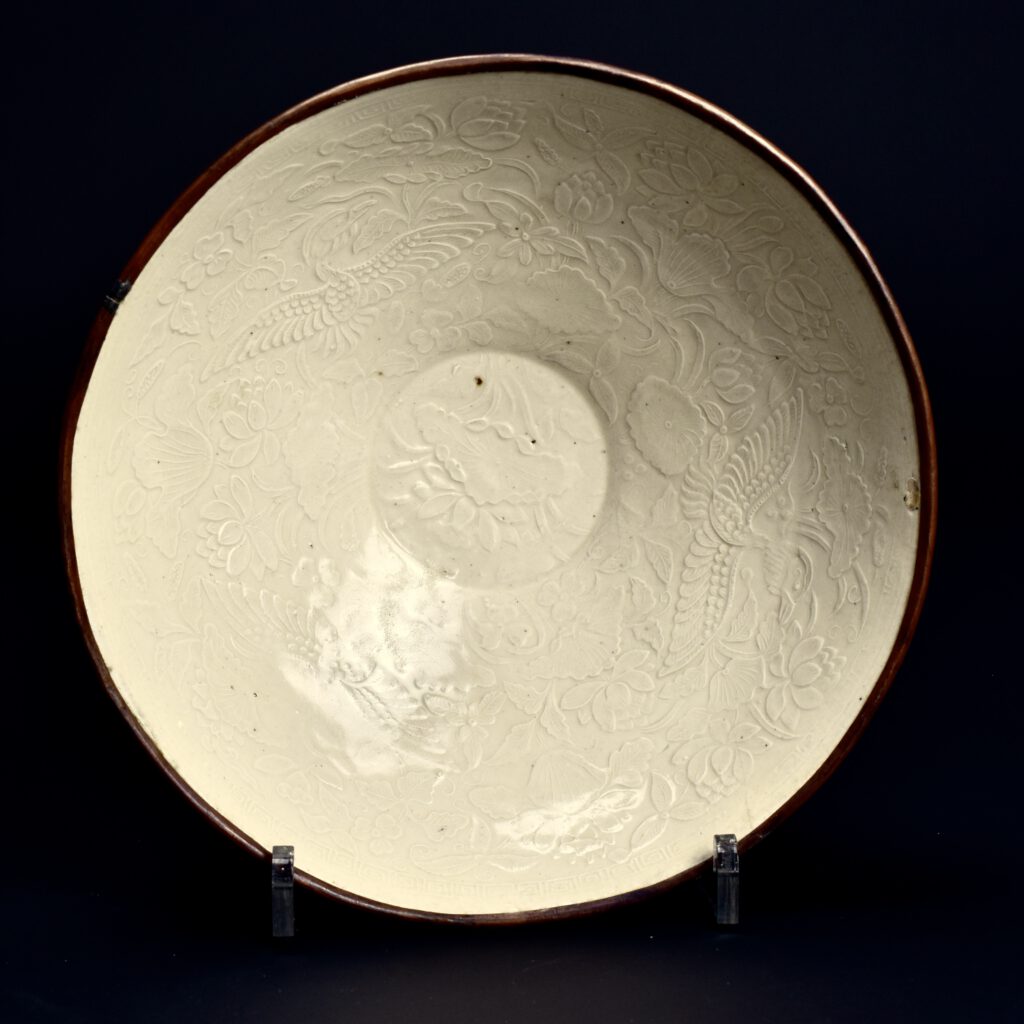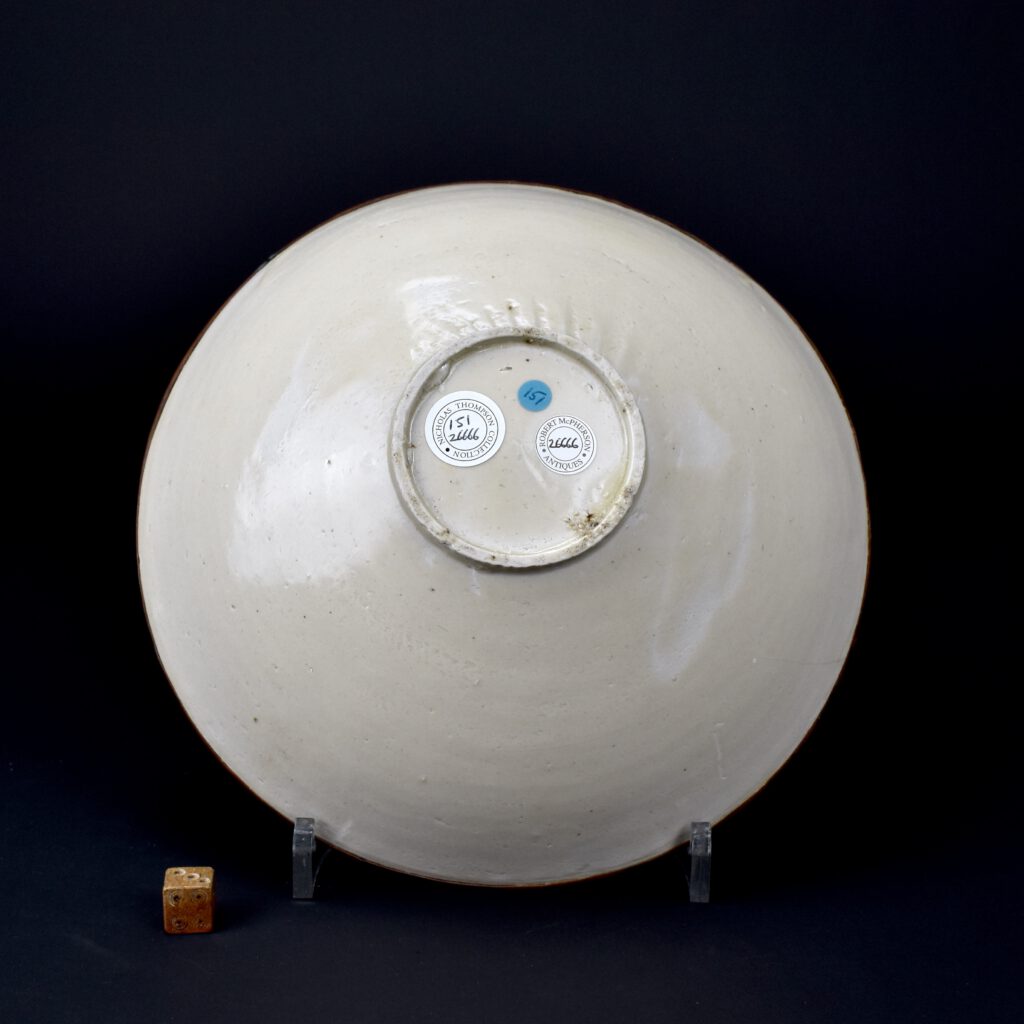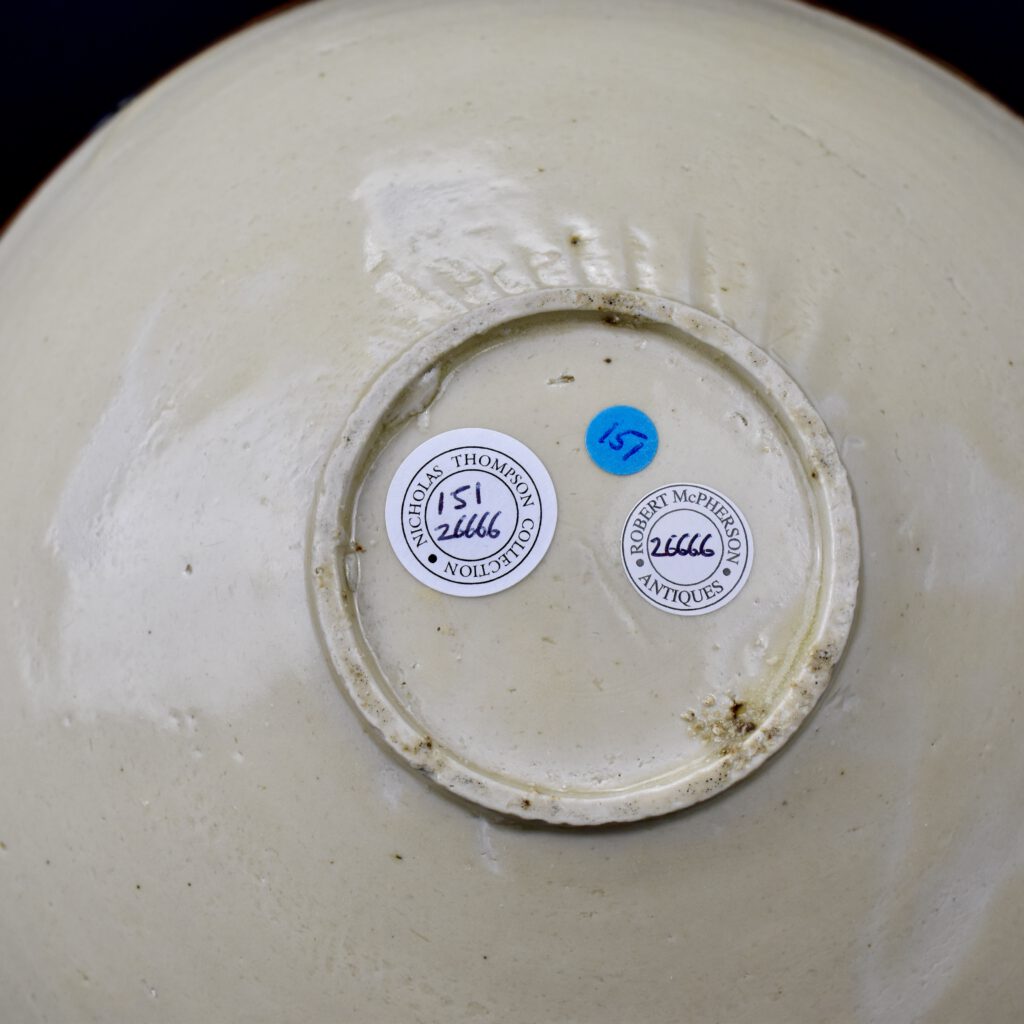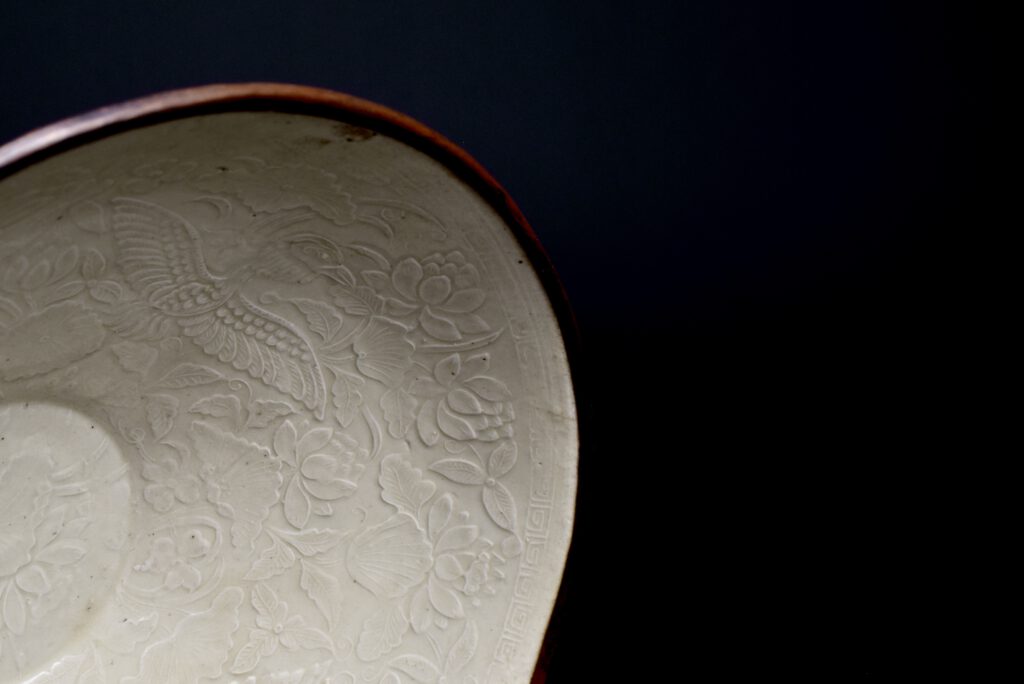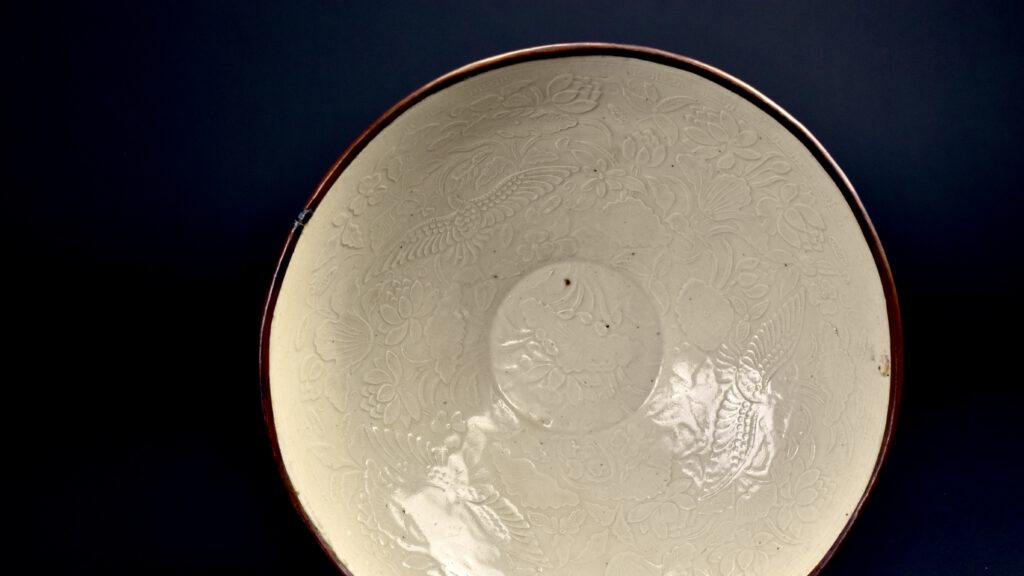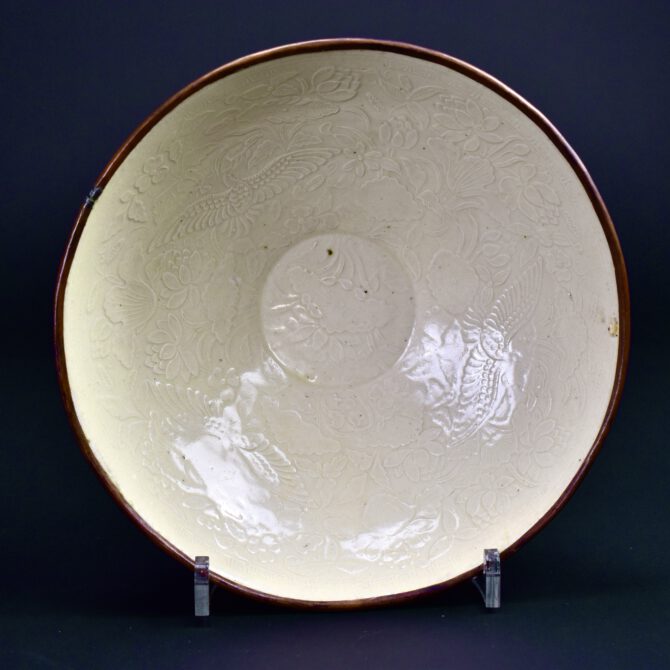
A Song or Jin Dynasty Moulded Ding Ware Bowl
A Moulded Phoenix and Lotus Ding Ware Bowl, Ding Kilns, Hebei Province, Song or Jin c.1050–1234. From Collection of Nicholas de la Mare Thompson (1928-2010). This Dingyao (Ding ware) bowl is crisply moulded and covered with a thin rich creamy glaze. Please note that the colour is different from one photograph to another, we photographed it in different lighting conditions, in a normal room setting the colour is an attractive of yellow cream. The cavetto is moulded with three phoenix, fenghuang, flying out of a lotus pond including other aquatic plants, the well has a flowering lotus emerging from the water.The lotus is one of the most important symbols in the Chinese art. This Buddhist emblem is a symbol of purity, as the perfect flower grows out of muddy ponds without a stain. The words for lotus in Chinese has the same meaning as to bind, connect (in marriage). It is one of the Eight Auspicious Symbols of Buddhism and is the flower used to represent summer.
This Ding ware bowl would have been fired on the rim, as it is the only unglazed part of the dish that has been wiped clean of glaze. The rim has a metal band to protect it as well as to hide the unglazed rough edge. The back is unevenly glazed with chatter marks showing. Ding wares come from a region of northern China formerly known as Dingzhou (Ding prefecture); the white porcelains made there have been prized since the Song dynasty (960–1279). Archaeologists have found the main Ding kiln complex on the border of present-day Quyang in Hebei province.
See below for more photographs and references.
SOLD
- Condition
- One crack, a firing fault under the rim filled with loose material ; see detailed photographs in the Photograph Gallery below.
- Size
- Diameter 19.6 cm (7 3/4 inches). Depth 6.3 cm (2 1/2 inches)
- Provenance
- Robert McPherson Antiques, Kensington Church Street 2nd of May 2000. From Collection of Nicholas de la Mare Thompson (1928-2010).
- Stock number
- 26666
Information
A Song or Jin Ding Ware Dish
Robert McPherson Antiques - Sold Archives 27023.
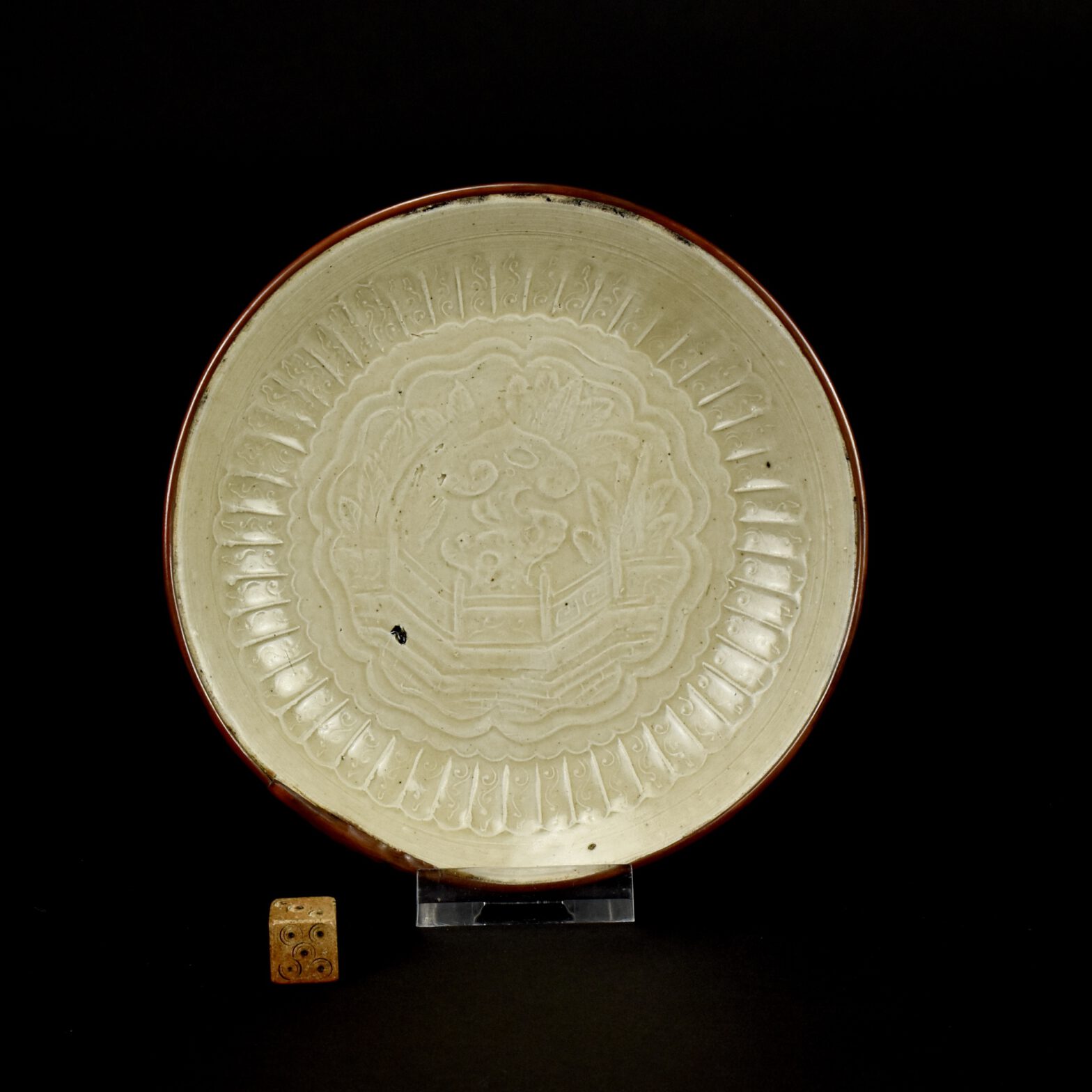
Nicholas de la Mare Thompson (1928-2010).

Nicholas de la Mare Thompson, the grandson of the author Walter de la Mare spent his career in publishing. He started at Nesbit where he was editor of the Janet and John series of children’s books but not all of his career was so safe. He wrestled with W.H. Smith over the content of Madonna’s raunchy Sex book on behalf of Paul Hamlyn’s Octopus Group and defeated Margaret Thatcher over Spycatcher. He could not bare dogma or hypocrisy.
It was hardly surprising that as a committee member of the O.C.S. he had his own ideas. He read and could recite great swaths of the articles of the Society, he used this not to attack but to stimulate debate. He approached the Society in the same way as he approached his understanding of Chinese ceramics, by stripping it down and starting again using clear empirical thinking. He was very concerned the Society was open to all and was run for the benefit of all members.
Nicholas came from a family of collectors, his love of oriental ceramics was broad but his focus was on early monochromes, especially those from the Song dynasty. He bought what he loved, what he thought had merit, not what was said to be good, and certainly not anything because it was fashionable. He didn’t have a stamp collectors’ approach, filling in the gaps of pre-existing ordered collection, rather he would react to an object, feeling it was right for his collection. Sometimes he wasn’t sure if it was right for his collection or not. He would then “borrow” pieces and live with them, other times he would ask his wife Caroline, who’s eye he trusted, if he should keep the piece or not. He was amused because I was often able to know if he would keep a piece before he did. We discussed “pots” endlessly, he loved to talk about ceramics with a wide variety of people and enjoyed the company of others on O.C.S. trips as well as in discussion groups or anywhere else. Later on he combined his love of Chinese ceramics with his love of books by extending his library to include rare early books, he used these to trace the development of collecting and scholarship in the 19th and early 20th century. He was fascinated by earlier scholarship, what was not understood but also what they understood, and we have lost. He was always reading and wanted to know more right up to the end, he didn’t see impending death as a barrier to knowledge or indeed collecting. The week before he died he questioned, if only for a second, whether it was too late to buy another pot for the collection. He concluded it was not, he was a true collector.
Nicolas died on the 25th of April 2010 at the age of 82 after living with cancer for two years. He leaves behind his energetically supportive wife Caroline and his three children. He was a kind, gentle and incredibly civilised man with a very sharp mind and dry sense of humour, he was passionate about the Society, its aims and its members. He was an incredibly supportive and thoughtful friend and will be missed very much.
